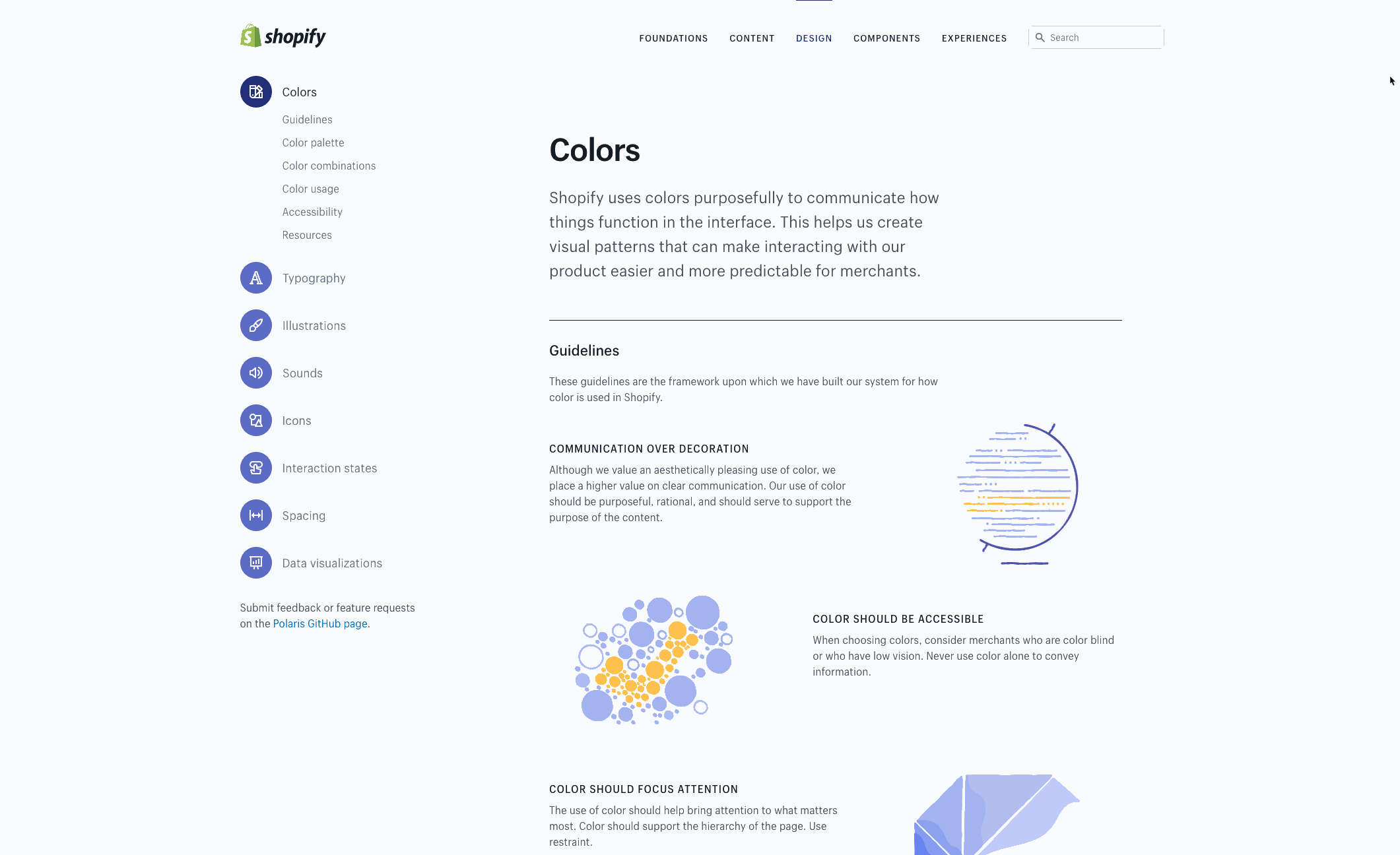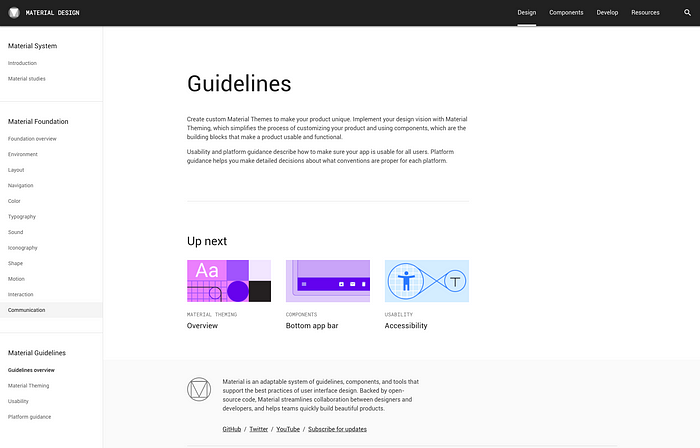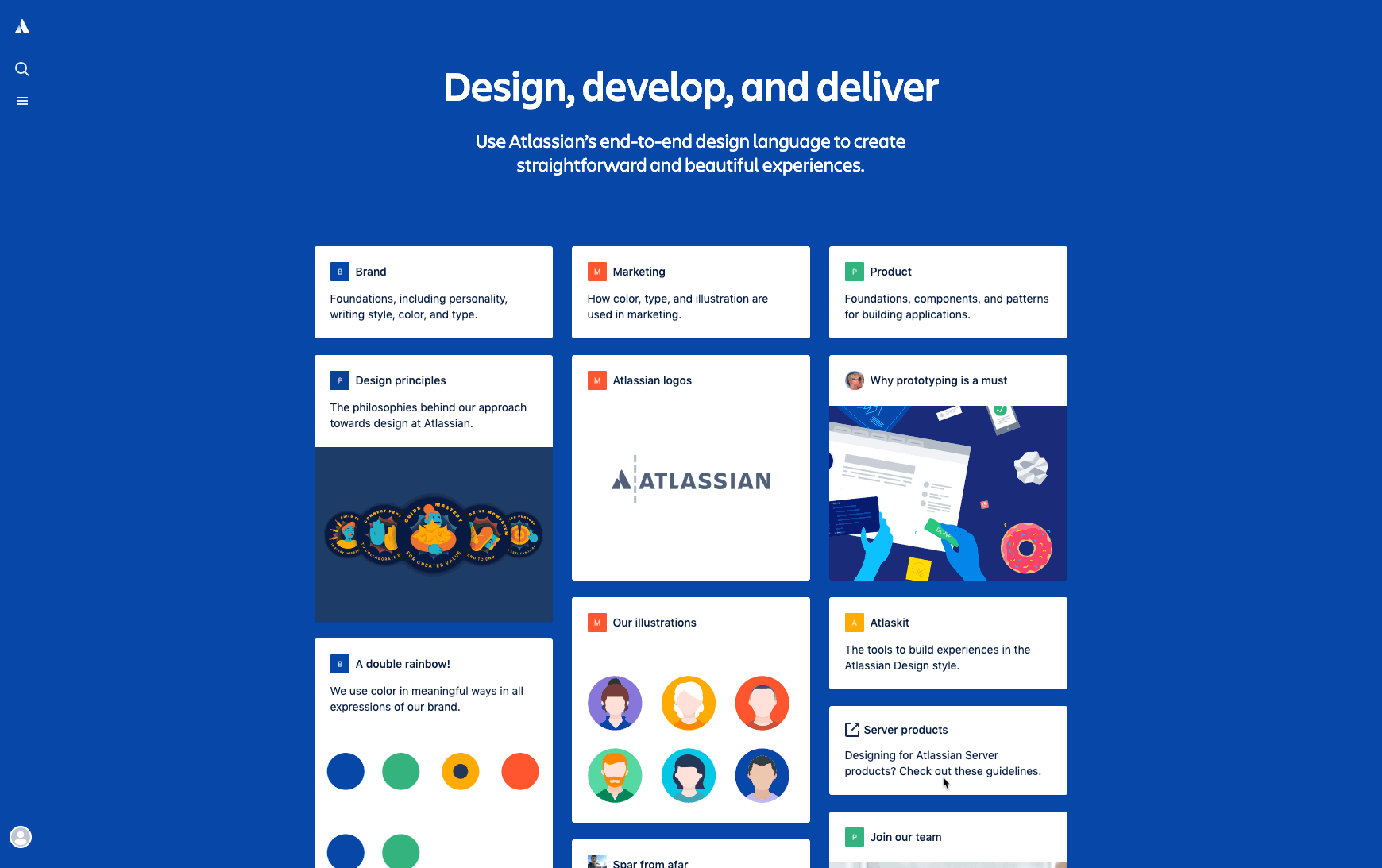Design 101: Everything You Need To Know About Design Systems
You know a very underrated fact: “Systems make the world go round for a business”. When we talk about success-building characteristics, we talk about innovation, creativity, passion, perseverance, and so much more. But without systems in place, survival becomes nearly impossible for any organization. And that is a fact every business owner and manager will wholeheartedly agree with.

In this blog, we are here to talk about a particular system that helps a business build a cohesive identity and ensure that its design team always delivers on its expectations no matter who is on the drawing board.
Given that design is one of the most challenging but important aspects of brand building, knowing about this system can change your life. We are talking about design systems.
What is it and why does every brand need it? Let us take a look.
Design Systems
Let us consider that you have started a business and are working with a branding consultant to develop a cohesive brand identity. When you get to the visual identity aspect, you will see that there are a lot of design elements that come into play. And as your consultant will tell you, it is very important that these elements are used consistently in every communication, product design, and marketing effort you make.
Consistency is a lot harder to achieve for a scaling business that is developing products and campaigns on the fly. If it were us, we would stop and ask – How do we ensure consistency beyond placing the trust in design teams? What is the process to account for human error and still deliver results as we want them to?
The answer would be to develop a design system. Typically, a design system helps you keep track of the many design assets and guidelines you have in place to ensure the right usage across different platforms and use cases. We do this by building a library of design elements that find repeated usage in your branding, marketing, and product development projects with detailed information about usage as well.
It is similar to a brand style guide but much more detailed and elaborate than it.
Why do brands need design systems
To truly understand what goes into a design system and how to create a design system for your brand, you must understand its scope first. What advantages does a brand have in addition to ensuring consistency by working with a design system?
Here are a few benefits to get you started with:
1. Speed up the design process
Usually, in product development, the design takes a long time because the designer has to manually reference the previous designs to ensure consistency. This usually means that there are a few errors that have to be again manually proofread by another designer. What if you had a system that tells the designer what goes where with the steps to it? And then the senior designer can also use the same design system to verify the output. It saves an inordinate amount of time and resources.
2. Design becomes easy to scale
Scaling a business is every business owner’s dream but it comes with a few challenges, one of which is ensuring consistency and quality every step of the way. Design systems can serve as effective QA tools and reduce the possibility of mistakes and errors.
With a design system at your disposal, you can rapidly scale branding, marketing, PR, and product development.
3. Focus more on UI/UX instead of individual elements
A product designer knows that good design does not just mean using the right design elements. Customer experience is very closely linked to UI/UX, so a logical flow and interface are important components of good design. When you have a design system in place, it frees up the designer’s mind from the smaller details and helps them focus on the bigger picture.
Your design team can deliver a premium result because they have a system to guide them through.
4. Cohesive style guide between cross-functional teams and junior designers
When we talk about scaling, it also means that your teams and personnel strength would grow. And that means that smaller teams work on many different aspects of the same product. To avoid confusion and misunderstanding, you can develop design systems that tell them what certain design elements mean and do in a product.
Design systems also serve as essential tools in training cross-functional teams and junior members in a minimal time period.
Building Design systems for your Brand
So we know how important design systems are and the many benefits they bring to the table for your business. The next logical step in this direction is to get started on the process of building design systems for your business.
First off, we will divide a basic design system into three parts :
- The what (Design assets and components)
- The how (Usage and style guidelines)
- The who (Design system teams)
This helps us understand and build a design system easily.
Let’s begin with the first part :
What goes into your design system?
Based on the size of your company, the scope of design services in your business, and your business goals, the exact components that make up your design system would vary. But here is an almost exhaustive list of design assets and elements that must be considered while developing design systems :
- Branding elements such as logo, brand font, color, image, and mascot. Include logo design that has to be used on digital platforms, print media, packaging, and other instances as well.
- UI/UX components such as input boxes, buttons, dropdown menus, layouts, and so on
- A grid system for all typical designs to specify position and alignment
- List of icons with significance
- Product images and photos to be used across all marketing campaigns
How to use the elements in the design system?
While you have all the data in your design system, it is also important to supplement it with information on how they have to be used. Typically, we like to call this a style guide. Similar to a brand style guide, this carries details on :
- Logo sizes on different placements and scenarios
- Font size and guidelines
- Color matching guidelines
- Stock image, video, and audio usage guidelines
- UI/UX scale-up and scale-down guidelines for responsive UI development
- Examples and screenshots to illustrate the guidelines so that the designers can see the output they are expected to deliver
Who develops and handles the design system?
No matter how small or large your organization is, you need a dedicated team to develop and maintain the design system. If you do not have a sizable graphic design team in-house and do not plan to invest in one, we recommend working with an unlimited graphic design service to develop your design system.
This way, you can ensure that your design elements and assets are being handled by a singular team without incurring a large expenditure. Since the task of developing assets and guidelines is not a recurring one or at least has a long gap in between usages, outsourcing is a sustainable option for new businesses.
As you grow, you can develop a team to maintain and update the design systems regularly so that they stay current at all times. For this, the team must comprise a designer, a manager, and a branding/marketing specialist.
Design System Examples for Inspiration :
The biggest validation for design systems is that all the large organizations that have delivered an outstanding visual and user experience to their customers use them to do so. And if you are looking for inspiration to develop your design system, this section is the perfect place to do so.
Let us take a look at understanding what the biggest names in tech and marketing are doing to provide a world-class product for their audience.
1. Google
Beginning with Google sets the tone because in a very real sense Google’s Material Design system paved the way for bringing design systems into a lot of conversations. Google’s design system is publicly available and is a masterclass in showing how exactly a design system must be.
From a cursory glance itself you can see that
- There is an extreme attention to detail
- The information is neatly categorized and organized for any team member or consultant to access conveniently
- By developing a clear visual language, the brand has created a perfect marriage of good design principles with scope for creativity and innovation
- Developing consistent and unifying UI becomes easy with strong design systems.
2. Apple
Do you use an Apple product? Even if you don’t, you must be familiar with the brand’s close association with everything that is excellent in tech design, UI, and UX for the last couple of decades. Apple is a huge organization, yet we see that the customer experience is consistent across the many products and interfaces the brand has released to the public.
A major reason for this is their robust design system. Apple’s famous design philosophy of excellence and consistency is the bedrock of their design system and ensures that :
- The design system imbibes the culture of quality and attention to detail
- Every product that is developed understands the many design elements and the role they play in the logical flow and UX design
- The system guides the designer and developer in creating a product that looks good and works well too
- All the smaller details are clearly specified without the designer having to look for them excessively
- Every product and its design regulation is mapped extensively for training and QA purposes
Kimp Tip: As you can see from Apple’s design system, having a solid foundation is important to the success of your design systems. Even if you are not a tech-centric business, a detailed design asset library can help you build consistency and excellence in your organization.
Work with the Kimp Graphics team to develop your design library today!
3. Atlassian
Design systems can make working a pleasure and Atlassian’s design system is a clear example of this. This design system is modeled similar to other popular collaborative tools like Trello so that it is not just a guideline but something people work with every day.
In this design system, the focus has been to keep the team appraised on all new updates, design changes, and also make it easy for them to do so for their peers. They have clear guidelines on branding assets, media kits, design assets, and how to use each of these elements in further development.
The aim here is to make the teams look at the bigger picture and not get bogged down by the smaller details, as it should be for every design system.
This design system is one of the most modern ones and can help an organization grow/scale rapidly with ease.
4. Shopify
Shopify is easily one of the biggest brands in the world right now. Ever since Ecommerce took over the retail world, every business has been closely or at least indirectly associated with Shopify. The brand enables small businesses to build easy-to-use ecommerce websites so that they can focus on scaling alone.
But there is another section of companies that work with Shopify. Those that develop services and tools for Shopify and Shopify merchants to use. And that means that there is a need for Shopify to create systems and guidelines to ensure consistency of everything that is associated with them
That is exactly what Shopify’s design system Polaris does.
With this design system,
- Developing for Shopify becomes a breeze
- Shopify is not burdened with proofing and editing every tool that happens since the information is freely available
- The platform does not have to devote additional time or resources to ensure that there is someone to guide designers and developers
Kimp Tip: No two design systems are the same. Before you develop the design system for your brand, define its goals and communicate the most significant design assets to the graphic design team for the best results.
Build your Design systems with Kimp
Efficiency in business is an important virtue and any process that helps you achieve that is an important asset. Design systems can boost efficiency, save time, money, resources, and help you create impactful designs for your business.
While creating a design system can be an overwhelming task, it is also one that you can safely outsource to a design team like Kimp. Our team of experienced designers can help you bring your vision to life without having to spend a bomb on it.
With our unlimited graphic design and video design service packages, you can design the brand style guidelines with the design elements at an affordable flat monthly fee.
Sign up for the free trial now to get started!





